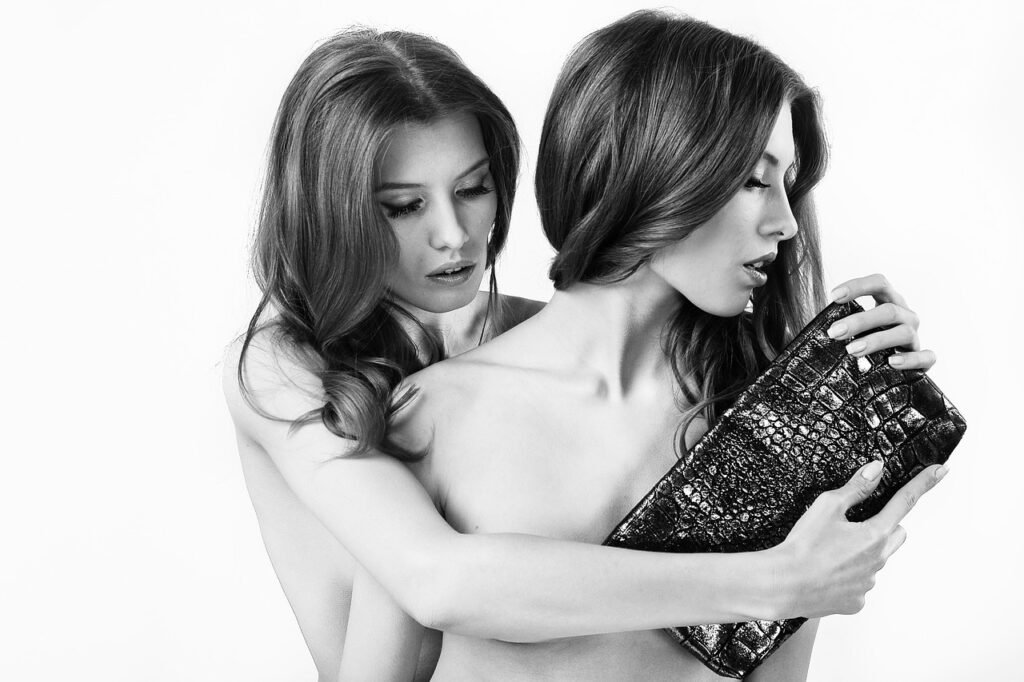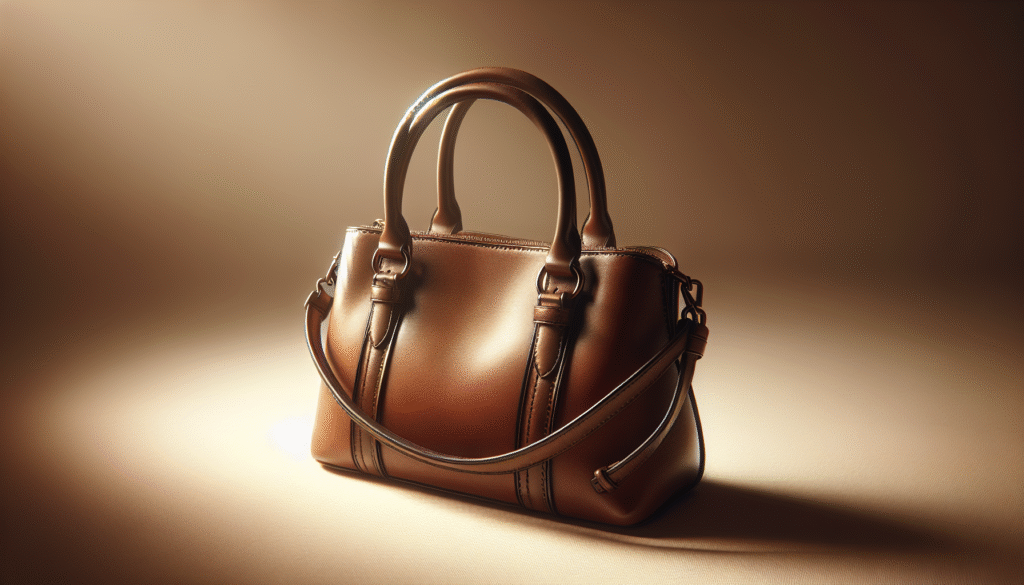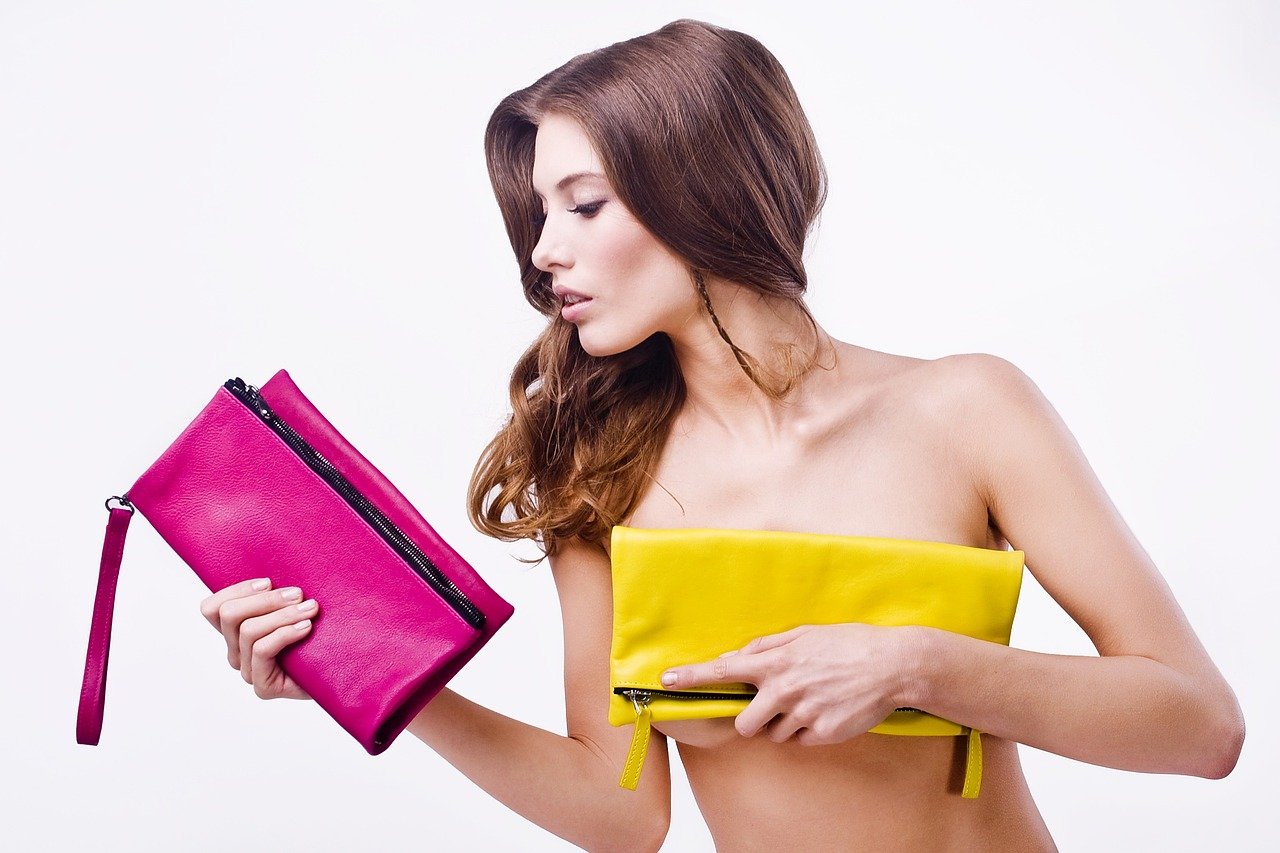Have you ever stood in front of a mirror holding two handbags and wondered which one truly fits your life?
Complete Guide to Women’s Handbags: Choosing Styles, Materials, and Care
This Complete Guide to Women’s Handbags will help you understand styles, materials, construction, and practical care so you can choose and maintain the best Designer Handbags for your wardrobe and lifestyle. You’ll find clear comparisons, actionable tips, and links to images and video resources that illustrate the points visually.
Why Good Women’s Handbags Matter
Women’s Handbags are more than a container for your essentials; it’s a functional accessory that expresses your personal style and supports daily routines. The right bag makes organization easier, complements outfits, and can last for years with proper care. You’ll also discover that choosing the right material and construction improves durability and long-term value.
How to use this Women’s Handbags Guide
Read the sections that apply to your current needs—whether you’re shopping for a work tote, a travel backpack, or a leather clutch for evening events. Use the tables for quick comparisons and follow the care instructions to extend the life of your favorites.
Understanding Women’s Handbags Styles
Knowing common handbag styles will help you pick a bag that suits specific occasions and needs. Each style has typical size, strap, and closure features that affect usability.
Common Women’s Handbags styles and when to use them
- Tote: Large, open-top bags ideal for work, school, and errands. You’ll appreciate the roomy interior and easy access.
- Shoulder bag: Medium-sized with a single or double strap. It balances accessibility and structure for casual or office wear.
- Crossbody: Long strap for hands-free carrying. Great for city errands and travel security.
- Satchel: Structured with top handles and often a strap. Choose this for a polished office look.
- Clutch: Small and usually strapless, made for evenings and formal events when you only need essentials.
- Hobo: Slouchy crescent shape that’s comfortable for everyday casual wear.
- Bucket bag: Tall and roomy with a drawstring closure. It’s a fashionable choice for everyday needs.
- Backpack: Practical for commuting, travel, and hands-free comfort.
- Belt bag / waist pack: Compact and secure for festivals, walking, and travel.
- Minaudière: Decorative evening case for ultra-formal events.
Quick style-to-occasion table
| Style | Typical Size | Best For | Access |
|---|---|---|---|
| Tote | Large | Work, shopping, travel | Open or zip-top |
| Shoulder bag | Medium | Everyday, office | Shoulder straps |
| Crossbody | Small–medium | Travel, errands | Long strap |
| Satchel | Medium | Office, smart casual | Handles + strap |
| Clutch | Very small | Evening, formal | Handheld |
| Hobo | Medium | Casual daily | Shoulder |
| Bucket | Medium | Fashionable daily | Drawstring |
| Backpack | Medium–large | Commute, travel | Two straps |
| Belt bag | Very small | Active wear, travel | Around waist/crossbody |
| Minaudière | Very small | Gala events | Handheld |

Materials: What Women’s Handbags are Made From
Material determines durability, appearance, maintenance needs, and ethical considerations. Knowing pros and cons helps you pick what fits your priorities.
Common materials and their characteristics
- Full-grain leather: Most durable and develops a rich patina. You’ll find it expensive but long-lasting.
- Top-grain leather: Slightly thinner, more uniform surface; still durable and stylish.
- Genuine leather: Made from layers of leather; lower quality and less durable than full- or top-grain.
- Bonded leather: Made from leather scraps bonded with polyurethane; inexpensive but not durable long-term.
- Suede: Soft and velvety with a luxurious look; prone to staining and needs careful maintenance.
- Canvas: Lightweight and affordable; often coated for water resistance. Great for casual, everyday bags.
- Nylon: Lightweight, water-resistant, and easy to clean—ideal for travel and active use.
- Exotic skins (e.g., crocodile, snakeskin): High-end and statement-making; require specialized care and can raise ethical questions.
- Vegan leather (PU or plant-based): Animal-free alternatives with varying durability and environmental impacts.
Materials comparison table
| Material | Durability | Maintenance | Water Resistance | Typical Price Range |
|---|---|---|---|---|
| Full-grain leather | Very high | Moderate (conditioning) | Low (can be treated) | High |
| Top-grain leather | High | Moderate | Low (treatable) | High–mid |
| Genuine leather | Medium | Low–moderate | Low | Mid |
| Bonded leather | Low | Low | Low | Low |
| Suede | Medium–low | High (protectant) | Low | Mid–high |
| Canvas | Medium | Low (spot clean) | Varies (coated better) | Low–mid |
| Nylon | High | Low | High | Low–mid |
| Exotic skins | High if cared for | High (specialist) | Low | Very high |
| Vegan leather (PU) | Variable | Low–moderate | Variable | Low–mid |
Hardware, Construction, and Quality Indicators
Construction details influence function and longevity. You’ll want to inspect stitching, hardware, linings, and reinforcement in Women’s Handbags.
What to check when evaluating quality of Women’s Handbags
- Stitching: Even, tight stitches without loose threads indicate good quality.
- Edge finishing: Sealed or lacquered edges protect leather from fraying and moisture.
- Hardware: Metal zippers, clasps, and feet should feel solid and not flake. YKK zippers are a common quality mark.
- Linings: Durable, stain-resistant linings (nylon or fine cotton) add to longevity.
- Reinforcements: Check handle attachments and strap anchors for rivets or reinforced stitching.
- Seam placement: Reinforced seams in high-stress areas (base corners, strap joins) extend life.
How materials and hardware affect function
High-quality hardware prevents unexpected failures, while robust stitching and reinforcement keep the Women’s Handbags shape and load-bearing capacity intact. If you carry heavier items regularly, opt for sturdy construction and reinforced handles.

Choosing Women’s Handbags for Your Lifestyle
Match bag features to your daily tasks to get maximum use and satisfaction.
Work and professional Women’s Handbags
For work, consider a tote or satchel with laptop compartment, structured shape, and internal organization. Choose neutral colors and durable materials like top-grain leather or coated canvas.
Travel Women’s Handbags
Select crossbody bags or backpacks with zip closures, anti-theft features, and multiple compartments. Lightweight, water-resistant materials like nylon will reduce weight and maintenance needs.
Casual everyday Women’s Handbags
For errands and casual outings, a tote, hobo, or crossbody works well. Consider easy-to-clean materials and a practical size that accommodates wallet, phone, keys, and small extras.
Evening and formal events
Clutches, minaudieres, or small satchels are your best options. Prioritize style, embellishment, and compactness over capacity.
Active and outdoor use of Women’s Handbags
For walking, biking, and festivals, choose belt bags, small crossbodies, or sports-friendly backpacks made from water-resistant fabrics with secure zips.
Size, Organization, and Capacity
Choosing the right size and internal layout keeps you organized and prevents overstuffing that damages the bag.
How to assess size of Women’s Handbags
- Measure what you carry daily (laptop, tablet, wallet, makeup, water bottle) and select a bag with compartments sized accordingly.
- Check strap drop (how far strap hangs) to ensure comfortable carrying.
- Consider structured vs slouchy shapes—structured holds shape and protects contents; slouchy offers flexible capacity.
Internal organization features to look for
- Padded laptop sleeve if you carry electronics.
- Zippered pockets for valuables like a wallet or passport.
- Slip pockets for phone and keys for quick access.
- Divider compartments to separate items and reduce clutter.

Color, Pattern, and Personal Style
Color choices influence versatility and the ability to pair your bags with outfits.
Choosing colors that work
- Neutral palette (black, brown, navy, taupe) maximizes wearability across looks and seasons.
- Statement colors (red, green, pastel) provide a focal point and personality but may limit outfit pairings.
- Patterns and textures (animal print, metallics, quilting) add flair—use these as seasonal or statement pieces.
Tips for matching Women’s Handbags with outfits
- Pair neutrals with neutrals for a polished look, or use a colored bag to add contrast to a muted outfit.
- Match metal hardware with other accessories (belt buckle, watch) for cohesion.
- Consider seasonality: lighter tones and pastels for spring/summer; richer hues for fall/winter.
Ethical, Environmental, and Budget Considerations
You’ll want to balance cost, ethics, and sustainability when choosing materials and brands.
Leather vs vegan and sustainable options
- Traditional leather offers durability and patina but raises animal welfare and environmental concerns depending on sourcing and tanning.
- Some vegan leathers are made from plastics (PU, PVC) and can have environmental downsides; plant-based options (pineapple fiber, cork, apple leather) are emerging.
- Look for certifications and transparent supply chains to make informed choices (e.g., LWG—Leather Working Group—certified tanneries).
Budget: investment Women’s Handbags vs fast fashion
- Investment bags (well-crafted leather, durable hardware) cost more but last longer and can be timeless pieces.
- Fast fashion bags are affordable but may not withstand heavy use. If you buy low-cost bags, consider them seasonal or experimental.

Care and Maintenance of Women’s Handbags by Material
Proper care extends the life of your bag. Follow material-specific guidelines.
Leather (full-grain, top-grain)
- Clean with a soft cloth and leather cleaner; test on a hidden area first.
- Condition 2–4 times a year depending on climate and use to prevent drying and cracking.
- Avoid prolonged exposure to moisture; blot spills immediately.
- Store in breathable dust bags and keep away from direct sunlight.
Suede and nubuck
- Use a suede brush to remove dirt; treat with a protective spray designed for suede.
- Avoid water contact; if wet, let dry naturally and then brush.
- For stains, use a suede eraser or specialist cleaner.
Canvas and fabric
- Spot clean with mild soap and a soft brush.
- For heavily soiled canvas, follow manufacturer instructions—some are machine washable in a gentle cycle but check hardware first.
- Protect with fabric water repellent sprays if appropriate.
Nylon and synthetic fabrics
- Wipe clean with soap and water.
- Air dry; avoid high heat.
- Remove odors by airing or using fabric-safe deodorizers.
Exotic skins
- Use a specialist cleaner and store in controlled humidity.
- Avoid exposure to oils and perfumes which may damage delicate finishes.
Vegan leather
- Wipe with a damp cloth for dirt; mild soap for spots.
- Avoid conditioners meant for animal leather unless specified safe.
Storage Tips for Women’s Handbags
How you store Women’s Handbags matters greatly for shape and longevity.
- Keep bags in dust bags or breathable cotton pillowcases.
- Stuff bags with acid-free tissue, bubble wrap, or soft fabric to retain shape—not newspaper (ink can transfer).
- Store upright or flat as manufacturer recommends; avoid hanging heavy bags by straps long-term.
- Maintain moderate humidity (40–60%) to prevent leather drying or mildew growth.
Repair, Restoration, and When to Seek Professionals
Minor issues you can fix at home include tightening hardware screws and cleaning minor stains. For major repairs, seek professional help.
Common repairs and solutions for Women’s Handbags
- Broken zipper: often best handled by a professional unless it’s a simple stop or slider replacement.
- Detached strap: can be restitched if hardware is intact—repair shops will reinforce stitching.
- Scratches on leather: minor scuffs can be buffed with leather balm; deep scratches may require pro restoration.
- Hardware tarnish: clean gently with jewelry cleaner or mild metal polish—test first.
Safety, Security, and Anti-theft Tips
You’ll want to protect your valuables and reduce the risk of theft.
- Use bags with zip closures or secure flaps in crowded areas.
- Wear crossbody bags to keep them close and accessible.
- Consider anti-theft features: slash-proof straps, locking zippers, RFID-blocking pockets.
- Keep valuables in inner zipped pockets rather than external slip pockets.
Buying Tips and Authenticity Checks for Designer Bags
When buying designer or high-end Women’s Handbags, authentication matters.
- Inspect serial numbers, date codes, holograms, or certificate cards and verify them on the brand’s official guides or through reputable authentication services.
- Check lining, stitching quality, and hardware engravings for consistency with known brand standards.
- Buy from authorized retailers or trusted resellers with return policies and authenticity guarantees.
Cleaning Hacks and Do’s/Don’ts
A few practical tips will save you time and avoid common mistakes.
Do:
- Blot spills immediately on leather and fabric.
- Test any cleaner on a hidden area first.
- Use a soft cloth or brush—avoid abrasive tools.
Don’t:
- Use household solvents (acetone, bleach) on leather.
- Use excessive water on suede or leather.
- Store damp bags or expose them to prolonged sunlight.
Visual Learning: Recommended Images and Video Resources
Seeing construction, styles, and care techniques visually can be very helpful. Here are quality public or widely available resources you can view for reference:
Images (examples from free image libraries):
- Tote and satchel comparison: https://unsplash.com/photos/Y8lCoTRgHPE
- Leather close-up (stitching and edge finishing): https://commons.wikimedia.org/wiki/File:Leather_stitching.jpg
- Crossbody and anti-theft backpack examples: https://unsplash.com/photos/N01y-pH-0ZQ
Videos (tutorials and reviews):
- Women’s Handbags care basics (YouTube): https://www.youtube.com/watch?v=example-care-video (search for “leather handbag care tutorial” for many guided demonstrations)
- How to choose a work bag (YouTube): search “work tote vs satchel comparison”
- Authenticity checks for designer bags: search for brand-specific authentication videos from reputable resellers
Note: Always verify the credibility of sources and prefer tutorials from leather specialists or trusted brands.
Frequently Asked Questions
Here are answers to common questions you may have when choosing or caring for handbags.
How often should you condition leather bags?
Condition 2–4 times a year depending on climate. If you live in a dry area you might condition more often.
Are vegan leather Women’s Handbags durable?
They can be durable but vary widely by manufacturing quality. Check reviews and product specs—PU tends to wear sooner than quality plant-based or high-grade synthetics.
Can you wash canvas Women’s handbags in a washing machine?
Only if the manufacturer allows it and hardware is protected. Spot clean when possible; for full washing, remove detachable hardware and use a gentle cycle or hand wash.
How do you remove ink stains from leather?
Ink stains are difficult; try rubbing alcohol applied sparingly on a cotton swab and then condition. For persistent stains, consult a professional.
Quick Checklist Before Buying a Handbag
- Do you have a clear use case (work, travel, evening)?
- Does the bag have the necessary organization (laptop sleeve, pockets)?
- Is the material suitable for your lifestyle and maintenance willingness?
- Are straps and hardware sturdy enough for your typical load?
- Does the color and design match your wardrobe goals?
- Have you verified authenticity for high-value purchases?
Closing Thoughts
A well-chosen handbag supports your day-to-day life, expresses your style, and can become an enduring piece in your wardrobe when cared for properly. Take time to match style and function, pay attention to material and construction, and follow tailored care routines to enjoy your bags for years.
If you want, tell me your typical daily essentials and occasions, and I’ll recommend specific handbag styles, sizes, and materials tailored to your needs.


